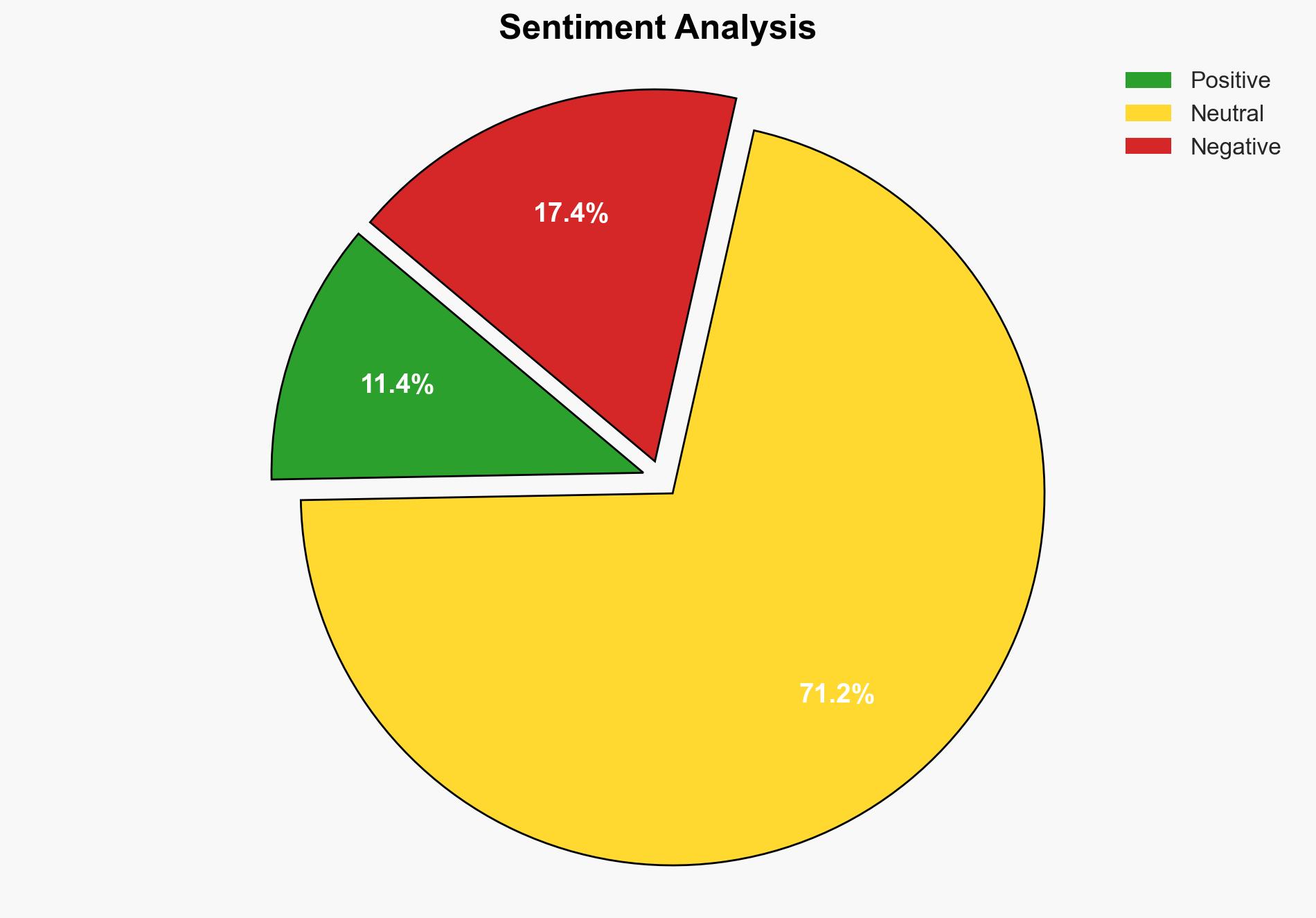Scientists sound alarm on hidden threat lurking within tap water system ‘This is a call to action’ – Yahoo Entertainment
Published on: 2025-03-11
Intelligence Report: Scientists sound alarm on hidden threat lurking within tap water system ‘This is a call to action’ – Yahoo Entertainment
1. BLUF (Bottom Line Up Front)
Scientists have identified a significant environmental threat posed by the transfer of untreated water across various regions. This practice facilitates the spread of invasive species, which can disrupt local ecosystems and biodiversity. Immediate action is required to address regulatory gaps and enhance surveillance to mitigate these risks.
2. Detailed Analysis
The following structured analytic techniques have been applied for this analysis:
General Analysis
The transfer of raw water, known as Raw Water Transfer (RWT), involves moving large volumes of untreated water through various channels such as lakes, reservoirs, rivers, and pipelines. This practice is essential for meeting agricultural, business, and personal needs. However, it lacks adequate regulation and surveillance, leading to the unintentional spread of invasive species. These species, such as the zander fish and zebra mussel, pose a significant threat to local biodiversity by overusing resources, destroying habitats, and causing native species to decline or become extinct.
3. Implications and Strategic Risks
The unregulated transfer of raw water presents several strategic risks, including:
- Environmental degradation due to invasive species disrupting local ecosystems.
- Potential economic impacts on industries reliant on biodiversity, such as fishing and tourism.
- Increased costs for managing and mitigating invasive species outbreaks.
- Risks to national security and regional stability if invasive species affect critical water resources.
4. Recommendations and Outlook
Recommendations:
- Implement stringent regulations and surveillance measures for raw water transfers to prevent the spread of invasive species.
- Invest in research to better understand the risks associated with different taxonomic groups and species.
- Enhance public awareness and education on the impacts of invasive species and the importance of biodiversity.
- Develop technological solutions to detect and manage invasive species in water systems.
Outlook:
Best-case scenario: Effective regulations and surveillance are implemented, significantly reducing the spread of invasive species and preserving local ecosystems.
Worst-case scenario: Continued lack of regulation leads to widespread ecological damage, economic losses, and potential conflicts over water resources.
Most likely outcome: Incremental improvements in regulation and surveillance occur, but challenges persist in fully addressing the threat of invasive species.
5. Key Individuals and Entities
The report highlights the contributions of Ava Waine and Zarah Pattison, who are instrumental in researching the impacts of raw water transfers and advocating for necessary actions to mitigate associated risks.





